When you discover something is eating your lettuce before you get the chance to enjoy it, frustration can quickly set in. Seeing holes in lettuce leaves and wilting plants can leave you wondering exactly what pest is eating your lettuce. I have also encountered annoying pests on my lettuce and know the frustration is real! So in this article, I’ll cover 10 common lettuce pests causing leaves to disappear and how to get rid of them. Read on to find out.

Related: Growing Lettuce | Why Lettuce is Flowering | 7 Reasons Your Lettuce Is Dying | Cause of Bitter Arugula | Spots on Arugula
Table of Contents
What’s Eating My Lettuce?
The most common pests eating your lettuce are slugs or snails, cutworms, flea beetles, aphids, crickets, fungus gnats, armyworms, leafminers, vegetable weevils and thrips.
So, let’s explore what’s eating your lettuce, and how you can get rid of them!
1. Slugs or Snails
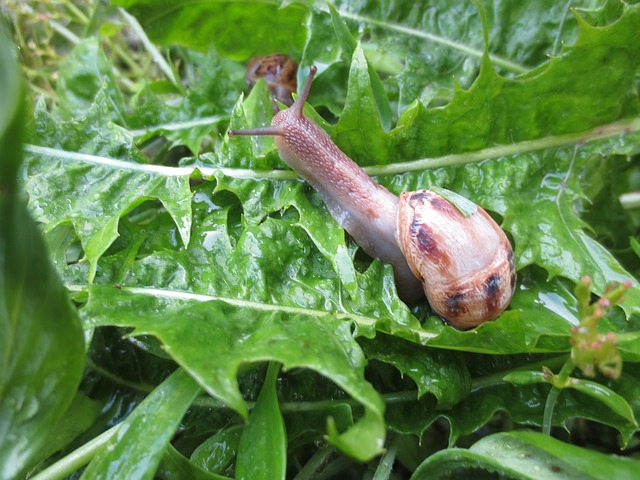
Two of the most common garden pests that could be behind your chewed lettuce leaves are slugs or snails. These common garden nuisances are related to each other and are both mollusks.
Slugs are soft, slimy, bodied creatures without a visible external shell, while snails possess a hard, protective shell. Both of these slimy mollusks leave shiny slime trails in your garden as they slide around.
If your lettuce has misshapen holes in the stems and leaves, coupled with shiny slime trails, slugs or snails could be the culprits. If you have a look in the area around your lettuce plants, you will find more evidence of slugs or snails, with shiny trails along your garden path and on the soil.
How to Get Rid of Slugs and Snails: First, you will need to remove the slimy little creatures from your lettuce by hand, at night. Slugs and snails like to hide in damp and shady gardens, so make sure you remove any such areas in your garden.
To stop slugs and snails from eating your lettuce, spread crushed eggshells or diatomaceous earth around your plants to protect them. These soft-bodied mollusks can not cross without being harmed. Another method is to use a pet and wildlife-safe bait like this one.
2. Cutworms
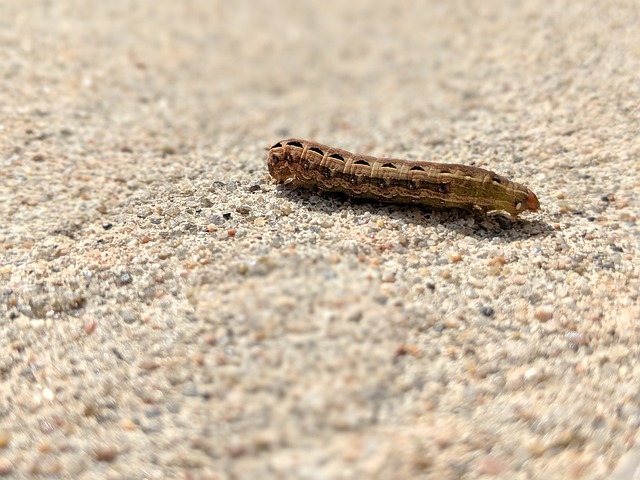
Cutworms are caterpillars that are the larvae of several moth species and are known for their destructive feeding behavior, mainly attacking the stems of young plants. These caterpillars tend to munch through the stems of your plants, leaving them cut off just above the ground, which is where they get their name from.
Cutworms come in various colors, including shades of gray, brown, black, pink, or green. They have smooth bodies and can range in length from 1 – 1.75 inches (2 – 4cm). When disturbed, these destructive caterpillars roll themselves into a protective C-shape.
These caterpillars can climb your plants, so don’t assume cutworms are not behind your nibbled lettuce just because its stem is intact.
How to Get Rid of Cutworms: Cutworms can be removed by hand from your lettuce, which you will need to do at night, as these caterpillars are nocturnal. Make sure you disturb the soil around your plants and remove any cutworms you see hiding there.
Once you have removed all of the visible cutworms, you can protect your plants by placing a collar around the stems. You can use cardboard or tinfoil (my personal preference), for the collar, which must penetrate the ground and reach a few centimeters above it. Spreading diatomaceous earth around the base of the lettuce plant will also help get rid of cutworms.
Keeping your garden free from debris is the best control for these nocturnal caterpillars.
3. Flea Beetles
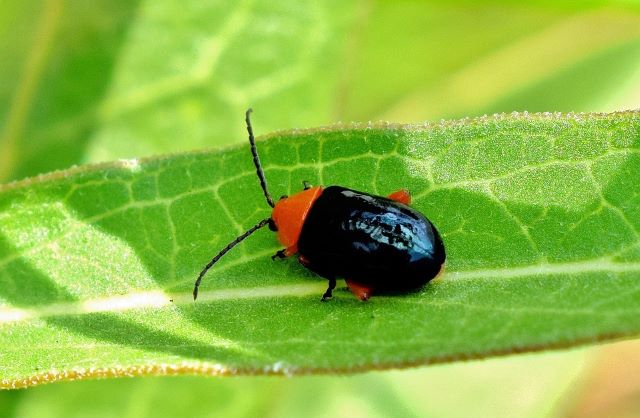
Flea beetles are small, agile beetles known for their jumping ability, which mimics that of a flea. The damage caused by these common garden pests can lead to the death of your lettuce if left untreated.
Flea beetles are shiny and can be black or bronze, with some possessing stripes. They are really small, measuring between .06-.12 inches (1.5 and 3mm).
If your lettuce is being eaten by flea beetles you will notice several irregular holes on your leaves, giving them a characteristic shothole appearance. If the infestation is severe, your lettuce will begin to wilt, and its growth may be stunted.
How to Get Rid of Flea Beetles: If you have noticed the telltale signs that flea beetles are crunching on your lettuce, you will need to apply neem oil to your plants. Neem oil should be applied every 3 or 4 days for two weeks, to stop the infestation, and then once a week after that.
Additionally, you can spread diatomaceous earth around your plants, which will stop flea beetles from jumping into your lettuce. Floating row covers are another great way to prevent flea beetles from eating your lettuce.
4. Aphids
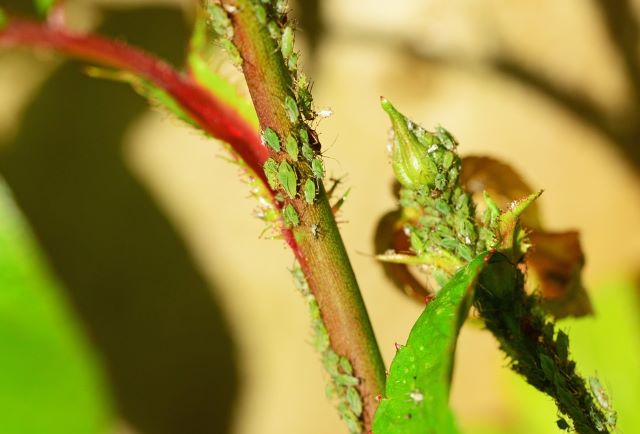
Aphids are tiny sap-sucking insects that plague home gardens everywhere. They are soft-bodied, small insects (measuring about .01 inches or 2-4mm), that can be pale green, white, black, or gray.
Aphids group together in large colonies on the underside of your lettuce leaves and on the stems of your plants. They secrete a sweet, sticky substance called honeydew, which attracts ants and can cause the development of sooty mold.
Other than ants and sooty mold, other signs that aphids are eating your lettuce are curling yellow leaves and the poor growth of your plants. Although the feeding habits of aphids may not cause too much damage, they can cause several diseases that can kill your plants.
How to Get Rid of Aphids: An aphid infestation is one of the easier pest problems to manage and eradicate using natural or home remedies.
If you spot aphids on your lettuce, the first thing to do is grab the garden hose. Give your plants a good blast of cold water to dislodge the little invaders. If that doesn’t dislodge all of them, simply wipe the remaining aphids away with a damp paper towel.
I always spray my plants in the early morning when removing pests or flushing fertilizers, to ensure they have enough time to dry out during the day. This is to avoid any negative impact on my plant’s health.
Once you have removed all of the aphids, you will need to apply a mixture of dishwashing liquid and water to your plants. To make the mixture, add 1 tablespoon of bleach-free dish soap to 1 liter of water. You will need to apply the mixture to your lettuce every 2-3 days for 2 weeks. You can also use an organic insecticidal soap spray.
5. Crickets
Crickets, these chirping insects are often associated with warm summer nights, and can occasionally become a nuisance in your garden, including your lettuce patch. Both adult crickets and their young (nymphs) can wreak havoc on your lettuce.
Crickets are small to medium-sized insects that have a compact and flattened body, with long antennae, and powerful hind legs which they use for jumping. They are usually brown or black in color and measure between ½ – ¾ of an inch (1 and 2cm).
I have a complicated relationship with crickets, as I am sure many of us do because they are beneficial to the ecosystem of our gardens. For one, these jumping insects eat aphids, and their waste acts as a natural fertilizer. The downside is that they will happily depend on a variety of plants and nymphs in particular love lettuce leaves!
How to Get Rid of Crickets: As crickets are beneficial to your garden, it is recommended that you do not kill them. The best option is to manage them and deter them from eating your lettuce.
The quickest and easiest way to stop crickets from eating your plants is to reduce the amount of light in your garden at night. Although crickets are nocturnal, they are attracted to light, so reducing the amount of light in your garden will reduce cricket activity.
Another way you can stop crickets from eating your lettuce is by planting strong-smelling plants, such as garlic or cinnamon, close to your lettuce patch. Alternatively, you can spray your plants with a mixture of dish soap, water, crushed garlic, and chili powder.
6. Fungus Gnats
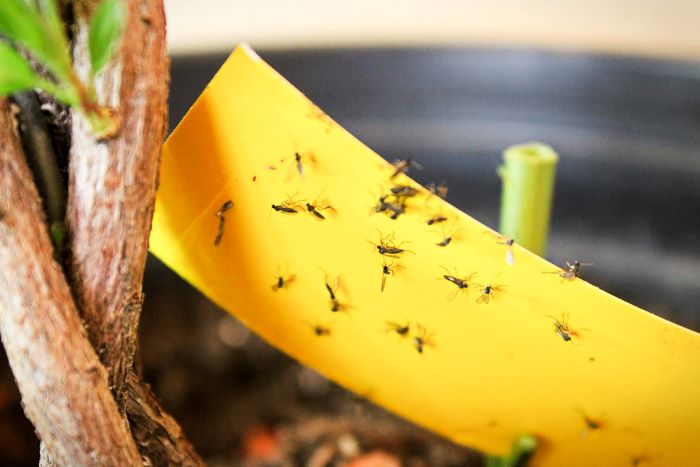
Fungus gnats are small, flying insects that can infest the soil in your vegetable garden. These small flying insects prefer to burrow down in damp, organic-rich soil, where they lay their eggs. The larvae are extremely destructive to seedlings, as they eat the roots.
Adult fungus gnats do not generally nibble your lettuce, it is the larvae that you should be concerned with. Where adult fungus gnats are flying around, you can be sure your soil is infested with their young.
Adult fungus gnats are small, dark-colored flies that resemble tiny mosquitoes, while their larvae have longish white legless bodies with black heads. If fungus gnats have infested your plants, you will see large groups of them walking along the foliage of your plants, or hovering over your plants.
If your lettuce has been infested with fungus gnats, your plant’s growth will be stunted, and can even die due to the damage. Luckily, these pests are more commonly found in greenhouses but have been known to target plants outdoors if the conditions are right.
How to Get Rid of Fungus Gnats: If fungus gnats are behind your wilting lettuce, you can use neem oil on the plants. Additionally, you can try sprinkling cinnamon on the soil around your plants. Cinnamon is a natural fungicide and therefore kills the fungus gnats’ food source. And you can use sticky traps like these ones. You can use one or a combination of these methods.
7. Armyworms
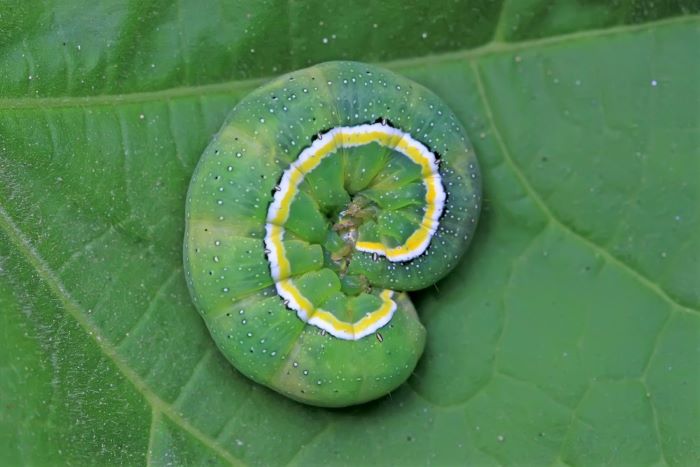
Armyworms are another caterpillar that could be using your lettuce as a buffet. Like cutworms, armyworms are the larvae of certain moth species. They are known for their voracious appetite and tendency to move in large groups, resembling an army on the move. These pests can cause significant damage to various crops, including lettuce.
These caterpillars are difficult to identify because they change color at various stages in their lifecycle. They can range in color from black to dark or light green and measure about 1 inch (2.5 cm) in length. The most common type of armyworm to target lettuce, are beet armyworms.
If your lettuce is being eaten by armyworms, you will first notice circular chunks missing from your lettuce leaves. They can make quick work of your lettuce plants, devouring your entire plant in one or two nights.
How to Get Rid of Armyworms: Armyworms can be removed by hand, which will have to be done at night. Once you have removed all the visible hungry caterpillars from your lettuce patch, you can spray your plants with neem oil.
If this method fails to get rid of an armyworm infestation, you could use a caterpillar spray. However, while this spray is marketed as an organic control, it will negatively impact the environment, so I’m in favor of using more natural methods in my garden.
8. Leafminers
Leafminers are the larvae of various flies that feed on the tissues inside leaves, creating distinctive yellowish-white tunnels or mines as they eat their way through.
The adult female leafminer flies insert their eggs directly into the leaves of your plants. The feeding habits of leafminer larvae can result in blotches in addition to the mines.
How to Get Rid of Them: As soon as you notice the yellowish-white trails in your lettuce leaves, remove them. Next, spray your plants with neem oil. This method will not immediately remove all leafminers from your plants, but it will disrupt their lifecycle enough that eventually, the problem should disappear.
9. Vegetable Weevils
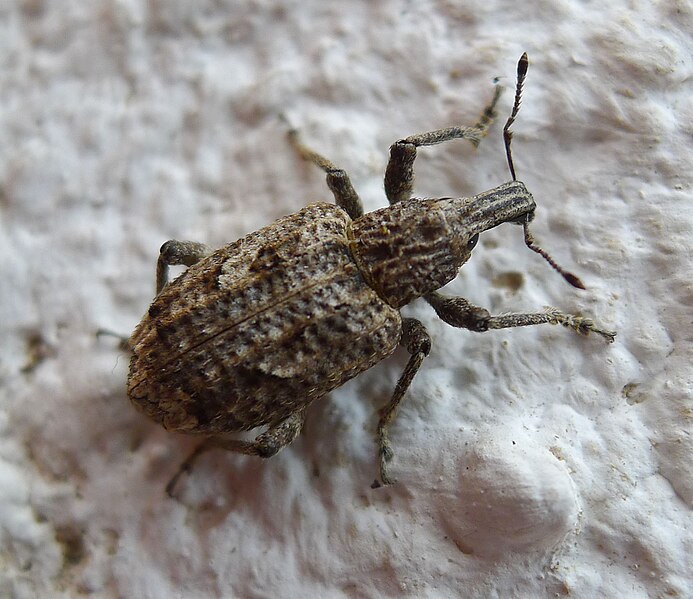
Vegetable weevils are a type of small beetle that could be behind your chewed lettuce leaves. These beetles and their larvae eat the roots and foliage of your lettuce plants.
Adult vegetable weevils have a distinctive elongated body shape with a broad snout-like projection extending from the head. Their coloration can vary but includes shades of brown, or gray. Their larvae are legless green or white grubs that live in the soil surrounding your lettuce plants.
If your lettuce is being eaten by vegetable weevils, you will notice irregular bite marks on the edges of your plant’s leaves.
How to Get Rid of Weevils: Adult vegetable weevils can be removed from your lettuce plants by hand, which you will need to do at night as these pests are nocturnal.
In addition to removing the beetles, you can set up trays of water around your lettuce, which the weevils will be drawn to. You can also use neem oil and spread diatomaceous earth around your lettuce plants.
For a particularly invasive weevil infestation, a pyrethrin garden insect spray can also be used. However, although this is an acceptable organic gardening spray, they do negatively impact the soil and beneficial insects in the garden.
10. Thrips
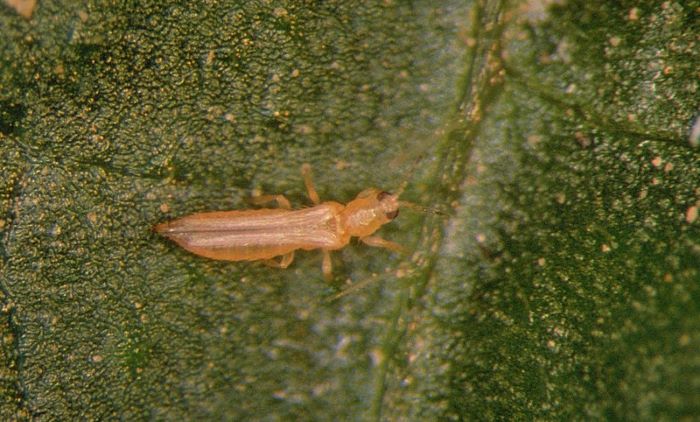
Although there are over 6500 species of thrips, it is most commonly the Western Flower Thrips that are responsible for munching on lettuce leaves. These thrips are small, slender, insects with fringed wings, who like to feed on your lettuce plants. They do this by sucking out the cell tissue of lettuce leaves, which they also happen to do to other insects.
If these tiny insects (measuring 3/64 – 1/16 inches or 1-1.5mm) are eating your lettuce, the leaves of your plant will begin to look silver. The silver splotches will eventually turn brown. The leaves on your lettuce may also start to twist and curl. In addition, you may notice tiny black flecks on the leaves, which are the insects’ feces.
As mentioned, there are many varieties of thrips, and many of them are actually beneficial and known as predatory thrips. They will eat the eggs of other pest insects, including the Western Flower thrips and insects such as aphids. So correctly identifying the thrips variety is important before trying to get rid of them.
How to Get Rid of Thrips: Once you know you are dealing with the Western Flower thrips, the first thing you will need to do is prune any damaged leaves off the lettuce. You can also dislodge thrips from your plants by shaking your lettuce, catching the startled insects in a cloth or container.
Another tip is to hose thrips off with water or gently vacuum them off the plant with an old vacuum cleaner – if you have one handy.
But the simplest way to prevent thrips from landing on your lettuce is to cover your plants with floating row covers. You can also use neem oil on the plants and sticky traps like these ones around the garden.
